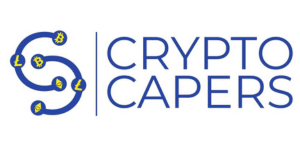You are about to initiate on a journey into the world of altcoins, where understanding how to analyze these cryptocurrencies can unlock potential investment opportunities. In this guide, you will learn the necessary tools and techniques needed to examine various altcoins, assess their fundamentals, and evaluate market trends. By mastering these skills, you can make informed decisions that may enhance your portfolio and help you navigate the rapidly evolving crypto landscape with confidence.
Key Takeaways:
- Research Fundamentals: Understand the project’s purpose, technology, and team behind the altcoin to assess its potential.
- Market Trends: Analyze price charts, trading volume, and market sentiment to identify trends and make informed decisions.
- Community Engagement: Evaluate the community support and developer activity, as these are indicators of the altcoin’s sustainability and growth prospects.
Understanding Altcoins
To navigate the expanding world of cryptocurrencies, you need to understand what altcoins are and their significance in the market. Short for “alternative coins,” altcoins are any cryptocurrency that isn’t Bitcoin. They encompass a wide range of digital currencies, each with unique features, purposes, and mining algorithms, providing ample opportunities for diversification in your investment portfolio.
Definition and Types of Altcoins
With various cryptocurrency options available, it’s vital to grasp the different types of altcoins. Here’s a breakdown:
| Type | Description |
|---|---|
| Utility Tokens | Used for specific applications or services. |
| Security Tokens | Represent ownership in an asset. |
| Stablecoins | Pegged to a stable asset, like the USD. |
| Forks | New cryptocurrencies created from existing ones. |
| Memecoins | Created for fun or community purposes. |
Recognizing the various categories can greatly aid your decision-making process in cryptocurrency investments.
Importance in the Cryptocurrency Market
Between Bitcoin and other cryptocurrencies, altcoins play a significant role in the broader market dynamics. They often introduce innovative features and applications not found in Bitcoin. By investing in altcoins, you broaden your exposure and potential for returns in the ever-evolving cryptocurrency landscape.
Plus, as market trends shift and new technologies emerge, altcoins can offer opportunities for financial gains that Bitcoin alone may not provide. You may discover that diversifying your investment into different altcoins can be a strategic move, helping you to mitigate risks while maximizing potential rewards through a range of projects and market niches.
Key Factors to Analyze Altcoins
The analysis of altcoins involves several key factors that can guide your investment decisions. Understanding these elements will help you assess the potential of various cryptocurrencies. Key factors to consider include:
- Market Capitalization
- Liquidity
- Project Team and Development
- Use Case and Technology
- Community Support
The combination of these factors will provide you with a clearer picture of an altcoin’s potential.
Fundamental Analysis
After identifying the altcoins you want to analyze, it’s necessary to perform fundamental analysis. This process involves evaluating the project’s whitepaper, its use case, and the problem it aims to solve. Additionally, you should assess the team behind the project, their experience, and the overall development activity. These factors will give you insights into the strengths and weaknesses of the altcoin.
Technical Analysis
Before exploring into your investment, you’ll need to conduct technical analysis. This involves interpreting price charts and trading volumes to identify patterns and trends that signal potential price movements. You should utilize various tools and indicators, such as moving averages and RSI, to help you gauge the market sentiment and make informed decisions.
To examine deeper into technical analysis, familiarize yourself with charting software and explore support and resistance levels. Observing historical price movements can provide context for potential future behavior. Implementing various analytical techniques, like candlestick patterns and Fibonacci retracements, can further refine your strategy, assisting you in making more educated trades.
Market Trends and Sentiment
All crypto investors need to stay updated on market trends and sentiment, as these can significantly influence altcoin value and performance. Understanding the broader market dynamics allows you to make informed decisions, aligning your investments with prevailing market conditions. By analyzing trends, you can better predict potential price movements and identify opportunities or risks within your altcoin portfolio.
Market Cycles
Around the cryptocurrency market, cycles appear to alternate between bullish and bearish phases, suggesting that timing your investments can enhance profitability. Understanding these cycles helps you to identify periods of growth and contraction, allowing for strategic entry and exit points in the altcoin market.
Influential News and Events
One of the key factors affecting altcoin prices is the news and events surrounding the cryptocurrency space. Announcements from influential figures, changes in regulation, or technological advancements can create significant market reactions, impacting your investment strategies.
Considering the rapid pace of developments in the cryptocurrency world, it is imperative to keep an eye on headlines and trends that may affect the sentiment towards specific altcoins, your investment choices, and the wider market dynamics. Monitoring social media channels, crypto news websites, and official announcements from developers will help you stay ahead and make proactive adjustments to your portfolio in response to influential events.
Tools and Resources for Analysis
For anyone venturing into altcoin analysis, having the right tools and resources is vital. Various platforms and communities offer rich insights and data, helping you evaluate potential investments effectively. From analytical platforms that provide detailed metrics to community insights that highlight trends and sentiments, leveraging these resources can enhance your understanding and decision-making process in the altcoin market.
Analytical Platforms
Before entering into your analysis, it’s crucial to familiarize yourself with various analytical platforms available at your disposal. Websites like CoinMarketCap, CoinGecko, and Messari offer comprehensive data on altcoin performance, market capitalization, and trading volumes. By using these platforms, you can compare different altcoins and acquire the quantitative data needed to form informed opinions about potential investments.
Data Sources and Community Insights
To enhance your analysis of altcoins, you should also tap into various data sources and community insights. Online forums, social media groups, and industry news sites are excellent venues for gathering opinions, news, and trends from other enthusiasts and experts. Engaging in these communities allows you to tap into collective knowledge and stay updated on important market developments.
Sources contribute significantly to your understanding of altcoin movements and sentiments. Platforms like Reddit, Bitcointalk, and Twitter can provide you with grassroots opinions and emerging trends. Exploring specialized subreddits or following influential figures can help you gauge market sentiments, while aggregated news sources keep you informed about regulatory changes or technological advancements impacting altcoins. Together, these resources empower you to make informed decisions in your investing journey.
Risk Management Strategies
Unlike traditional investments, trading altcoins involves higher volatility and potential for loss. Therefore, incorporating effective risk management strategies is necessary for preserving your capital. You can learn more about the basics of managing risk by checking out How to Start Trading Altcoins: A Beginner’s Guide. Implementing these strategies can help you navigate the unpredictable nature of the crypto market.
Diversification
Diversification is a key strategy to reduce risk in your investment portfolio. By spreading your investments across different altcoins, you minimize the impact a poor-performing asset can have on your overall capital. This approach not only helps balance potential losses but also allows you to capitalize on various market opportunities in different sectors.
Setting Investment Limits
Along with diversification, setting investment limits can significantly enhance your risk management strategy. By determining the maximum amount of capital you are willing to commit to individual altcoins, you create a safety net that protects against larger losses while allowing for the possibility of gains.
Limits are not just about capping your investment; they also serve as a psychological tool to help you avoid impulsive decisions driven by market emotions. Establishing clear boundaries for your trades allows you to stay disciplined, ensuring that you only invest what you can afford to lose while maintaining a healthy approach to potential profits.
Common Pitfalls to Avoid
After stepping into altcoin analysis, it’s imperative to steer clear of frequent mistakes that may hinder your success. Many novice investors overlook these obstacles, which can lead to poor decision-making and potential losses. To enhance your understanding, explore this resource on What is an altcoin? A beginner’s guide to cryptocurrencies …
Overtrading and FOMO
Along with being aware of market trends, it’s easy to fall victim to overtrading and the fear of missing out (FOMO). Frequent buying and selling may lead to significant losses, as emotional trading often clouds your judgment.
Reliance on Hype
By heavily relying on market hype, you risk making uninformed decisions about your investments. The allure of trending coins can be tempting, but such choices often lack substantial backing.
And while it may seem appealing to invest in coins generating buzz, this can result in hasty moves based on fleeting excitement rather than thorough analysis. Many altcoins rise and fall rapidly, driven by speculation rather than solid fundamentals. Prioritizing current trends can divert your attention away from evaluating a coin’s real potential, leading to unwise investment choices. To navigate the landscape effectively, focus on well-researched options that align with your long-term goals.
Final Words
Drawing together the insights presented in this guide, you now possess the foundational tools to effectively analyze altcoins. By understanding market trends, evaluating project fundamentals, and utilizing technical analysis, you can make informed decisions that align with your investment goals. Keep refining your skills and stay updated on the ever-evolving crypto landscape, allowing you to approach altcoin investments with confidence and clarity. Your commitment to continuous learning will enhance your ability to navigate this dynamic market successfully.
FAQ
Q: What factors should I consider when analyzing an altcoin?
A: When analyzing an altcoin, consider several key factors:
1. Project Fundamentals: Investigate the purpose of the altcoin, its use case, and the problem it aims to solve. Check the project’s whitepaper and understand its roadmap and vision.
2. Team and Development: Research the background of the team behind the project. Look for their experience, credibility, and any previous successful ventures in the cryptocurrency space.
3. Market Position and Competition: Analyze the altcoin’s market cap, trading volume, and compare it to similar projects. Determine its competitive advantage and identify potential threats from rival cryptocurrencies.
4. Community Engagement: Evaluate the size and activity of the community supporting the altcoin. A strong, engaged community can indicate a healthy project and potential for growth.
Q: How can I assess the technology behind an altcoin?
A: Assessing the technology behind an altcoin can be done through the following steps:
1. Blockchain Infrastructure: Evaluate the blockchain network on which the altcoin operates. Determine if it’s built on its own platform or if it’s a token on another blockchain, such as Ethereum.
2. Scalability and Transaction Speed: Investigate the altcoin’s transaction processing capabilities, including its speed and scalability. Review whether it can handle a growing number of users without slowing down or incurring higher fees.
3. Security Features: Look into the security protocols that the altcoin uses. Understand its consensus mechanism (e.g., Proof of Work, Proof of Stake) and any vulnerabilities or past security breaches reported.
4. Innovative Technology: Identify any unique technological innovations that the altcoin introduces, such as smart contracts, decentralized applications, or other features that distinguish it from others.
Q: What resources can I use to stay updated on altcoin analyses?
A: To stay updated on altcoin analyses, utilize the following resources:
1. Crypto News Websites: Follow reputable news sites like CoinDesk, CoinTelegraph, and The Block for the latest developments in the crypto space.
2. Social Media and Forums: Platforms like Twitter and Reddit (especially subreddits like r/CryptoCurrency) are invaluable for real-time discussions and community insights on altcoins.
3. Analytics Platforms: Use tools like CoinMarketCap, CoinGecko, and Messari to track altcoin prices, market caps, and analytical data. These platforms often provide in-depth statistics and comparisons.
4. YouTube and Podcasts: Explore channels and podcasts that focus on cryptocurrency analysis. Many content creators provide insights, reviews, and interviews with project developers that can enhance your understanding.








